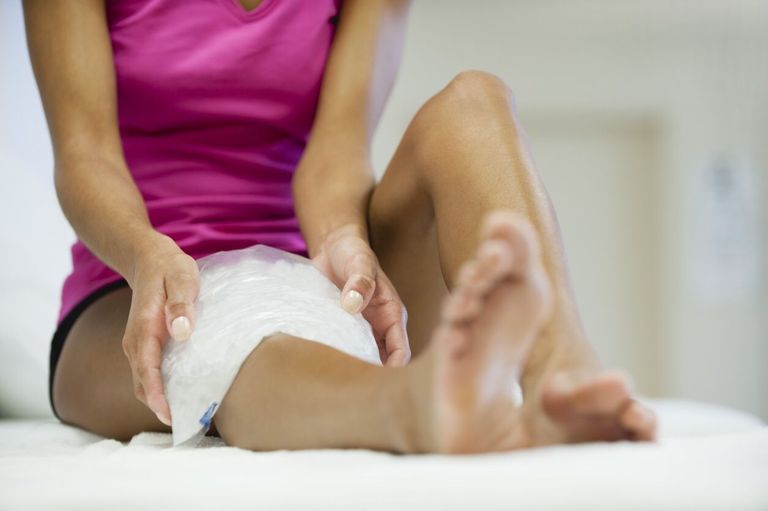Ankle or knee sprains are very common injuries. With appropriate first aid and home treatment, we can contribute to an earlier recovery. The RICE and POLICE protocols are two similar basic guidelines on how to treat common soft tissue injuries and trauma such as ankle sprains. Simpler RICE is well known in our country, especially among coaches and athletes. Its origins date back to the 1980s. The name of the RICE concept is derived from the four words that make up the basic guidelines on how to treat soft tissue injuries:
Rest: sufficient rest is necessary for soft tissue injuries, especially in the first few days after the injury, to avoid increasing the extent of the injury and swelling, which prolongs the healing time.
Ice – cold: cooling or “icing” the affected area reduces blood flow and thus bleeding at the site of the injury and subsequent swelling. It also has an anti-inflammatory effect and relieves pain. Cold should be applied for 15 to 20 minutes at least 3 times a day for four to six days. Do not apply the ice directly to the skin but over a towel or other cloth to avoid causing frostbite. Do not use cooling if the skin is also injured.
Compression – tightening (e.g. with a compression bandage) helps to reduce swelling, which can worsen blood circulation in the area in the long term and thus slow healing. Larger swellings, especially near the joints, also impair mobility and increase pain. Ideal are compression sleeves or stockings, or a compression bandage, which can also have a fixation function.
Elevation – elevating the injured area (if possible) above the level of the rest of the body will promote the return of venous blood and thus reduce swelling.
The POLICE (Protection – Optimal Loading – Ice – Compression – Elevation) protocol is based on new knowledge and experience. It extends and complements the RISE protocol and emphasizes adequate protection of the injured site and optimal loads, and places less weight on the ice, compression, and uplift component.
Protection – protection of the injured area from further injury. It is a warning against overuse during the early stages of an injury and against returning to sport too often.
Optimal Loading – optimal loading consists of performing movements with the injured part of the body that do not cause pain during or after the exercise, nor subsequent swelling. The sequence of movements is from the least difficult to the more complex and difficult. We start with passive movements and gradually, if possible, we move to active movements without resistance, with resistance. Patients often in their caution spare the injured part for too long, which prolongs the healing time and, most importantly, the return to full function. Eiff M.P. and Smith A.T. conducted a study at the University of Oregon in which they divided 82 patients with ankle sprains into two groups. The first group wore a flexible brace for the first two days after the injury and gradually started to load the ankle during rehabilitation for the next 8 days. The second group immobilized the ankle for 10 days with a plaster splint. The first group to complete the early exercise program experienced significantly less pain after three weeks (57% vs. 87%, p = 0.02). Also, the ability to return to normal workload ten days after injury was significantly greater in the former group (54% vs. 13%, p <0.001).
The effectiveness of cooling is questionable, according to recent studies, and excessive cooling may slow down treatment. Cooling reduces both blood flow and inflammation. However, inflammation is one of the mechanisms of healing and is necessary to some extent. Also, too much reduction of blood flow slows down healing. Therefore, most articles (on POLICE) recommend the use of cooling only for the first 2 to 3 days after the injury and in case of severe swelling and inflammation. The effect of compression and elevation of the limb is felt during the application, and after its completion, most of the time the swelling returns. This significantly reduces the benefit of the procedures, especially when used outside the acute phase after injury.
After reviewing several articles and discussions, and based on personal experience, I recommend using the newer POLICE protocol, which is more detailed and reflects new knowledge in the field. Nevertheless, its application is highly dependent on feelings and personal experience. For optimal treatment and especially injury prevention, we also recommend a detailed musculoskeletal examination.

